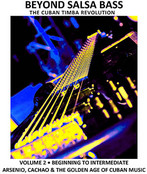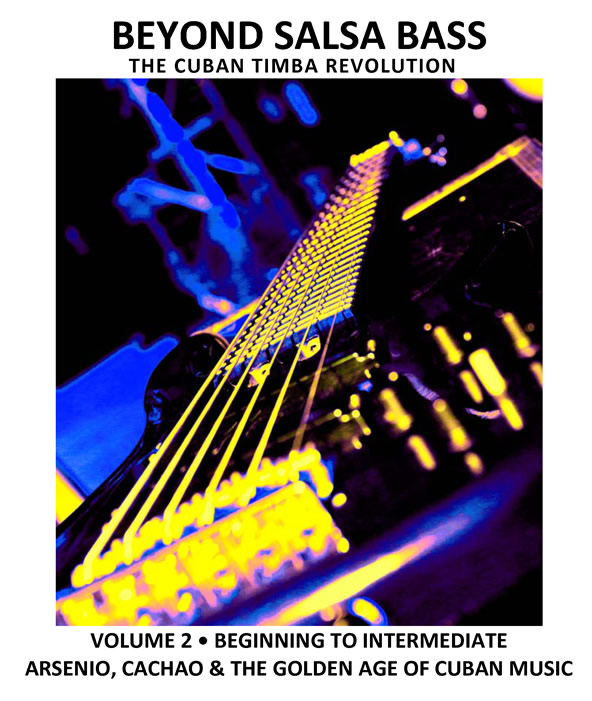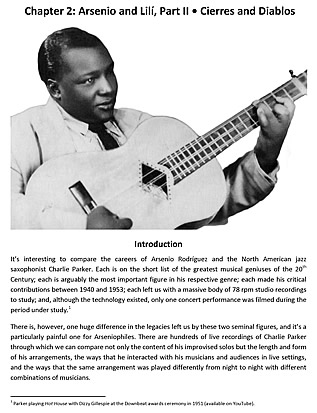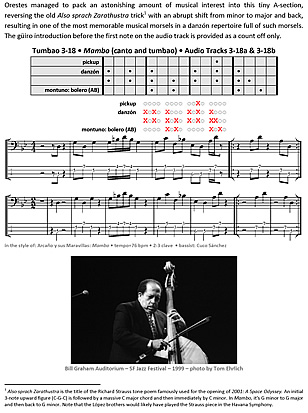|
TOTAL:
|
$0.00 |

|

|
|
Your On-Line Source for Latin Music Downloads!
|

Contact us to license Latin music for tv & film.
|

Beyond Salsa Bass Vol2Artist: Kevin Moore
|
||

| # | Name | Play | Time | Info |
|---|---|---|---|---|
| 01 | Cierre Exercise 10 - fast |
|
1:26 | Track 19 of 256 - Beyond Salsa Bass Volume 2 |
| 02 | Cierre Exercise 10 - slow |
|
1:28 | Track 20 of 256 - Beyond Salsa Bass Volume 2 |
| 03 | Me boté de guaño - fast |
|
0:39 | Track 90 of 256 - Beyond Salsa Bass Volume 2 |
| 04 | Me boté de guaño - slow |
|
0:54 | Track 91 of 256 - Beyond Salsa Bass Volume 2 |
| 05 | Tanga - fast |
|
1:01 | Track 183 of 256 - Beyond Salsa Bass Volume 2 |
| 06 | Tanga - slow |
|
1:03 | Track 184 of 256 - Beyond Salsa Bass Volume 2 |
| Play All - Oir Todas |  |
|||

| Name | Difficulty | Notation | Price | ||
|---|---|---|---|---|---|
| eBook Beyond Salsa Bass Vol2 | Sample | Medium | Bass - Bajo | $14.99 |

|

Special notes about Beyond Salsa Bass Volume 2:
** Beyond Salsa Bass Volume 2 is the second in a series of instructional methods composed of an eBook with audio tracks. The eBook, audio tracks, and video clips are sold separately.
The eBook is a personalized pdf download compatible with Adobe Acrobat (more eBook info here).
** Audio: The Audio product includes a fast and slow file for each bass tumbao in the book as well as various example files corresponding to the text. Note that for every piano tumbao in our sister volume, Beyond Salsa Piano Vol.2, there is a corresponding bass tumbao in the Beyond Salsa Bass Vol.2 book and audio product. In these cases, the piano audio is included in one channel. In other cases, the audio consists of just bass and clave. If this seems confusing, think of it this way: Beyond Salsa Piano Vol.2 is a subset of Beyond Salsa Bass Vol.2. The bass book has a bass tumbao for every piano tumbao in the piano book, but the bass book also has many more additional tumbaos for tracks not covered in the piano volume. The audio tracks and eBook for Beyond Salsa Bass Volume 2 can be purchased on this page.
** Beyond Salsa Bass follows the same game plan as Beyond Salsa Piano: five volumes covering the history of Cuban bass playing - from changüí and son to songo and timba - followed by a series of books on individual star bass players.
Beyond Salsa Bass, Vol. 2 covers the same period as Beyond Salsa Piano, Vol. 2 - Cuba from 1940-1959, aka, the "golden age of Cuban music". After a theoretical chapter covering clave alignment and rhythmic breaks, or cierres, the second chapter, over 100 pages, is devoted to the bass tumbaos and cierres of Arsenio Rodríguez. Chapter 3 is on the great bassist Cachao López and the final chapter covers the multitude of great Cuban artists of the 1950s: Beny Moré, Celia Cruz, Orquesta Aragón, José Fajardo, et al.
Setting the Stage: Arsenio’s Innovations -- We ended Volume 1 of this series with a study of Arsenio Rodríguez’s bass tumbaos of the 1940s – bass tumbaos that revolutionized not only Latin music, but popular music in general. Instead of merely spelling out the chords with formulaic two-beat dance rhythms, Arsenio began to compose memorable bass tumbaos that related thematically to the vocal and horn parts of specific songs. The rhythmic patterns of these bass tumbaos often lasted four main beats instead of two, and were often aligned to the clave instead of being clave-neutral.
 An equally important innovation of Arsenio Rodríguez was the addition of the diablo – a new type of section, with interlocking, harmonized brass and vocal riffs, and sometimes lead trumpet ad-libs and percussion flourishes. Arsenio’s diablos led directly to the mambo genre, and later to the characteristic horn riff interludes – also called mambos – that we hear today in every arrangement.
An equally important innovation of Arsenio Rodríguez was the addition of the diablo – a new type of section, with interlocking, harmonized brass and vocal riffs, and sometimes lead trumpet ad-libs and percussion flourishes. Arsenio’s diablos led directly to the mambo genre, and later to the characteristic horn riff interludes – also called mambos – that we hear today in every arrangement.
Arsenio also placed a heavy emphasis on original and intensely polyrhythmic instrumental solos by himself on tres and by several phenomenal pianists, including Rubén González, Lino Frías and above all, the great Lilí Martínez. Additionally, almost all of Arsenio’s son montuno arrangements featured a call and response passage between coro and solo trumpet. He employed many of the greatest trumpeters of the era, including Félix Chappottín, Alfredo “Chocolate” Armenteros and Oscar “Florecita” Velazco.
Arsenio connected the featured instrumental solo to the diablo with a dramatic rhythmic break, or cierre . We’ll begin this chapter with 10 exercises to help you understand Arsenio’s cierres and to teach you to use and extend his techniques to create your own cierres. In the next chapter, we’ll proceed to 55 real life examples modeled on Arsenio’s Cuban recordings of the period from 1945 to 1952. Each of these will be presented as an exercise that begins with the bass tumbao used for the solo, moves on to the cierre itself, and ends with the bass tumbao used for the diablo. The exercises go chronologically through Arsenio’s Cuban recordings, covering most of the songs that feature this arrangement approach. Finally, we’ll study a complete bass chart for No quiero, one of the very first songs Arsenio recorded after moving to New York, and one of his most adventurous in terms of the quantity and creativity of its cierres.
Cierre literally means mean “closing” – as in the closing of the piano or tres solo, but an Arsenio cierre can also be thought of an opening – as an introductory brass and drum fanfare heralding the arrival of the climactic diablo to follow.
The most striking feature of a cierre is the contrast between total silence and loud, powerful hits played in unison by the full band, but there’s also a sharp contrast in rhythmic function.
Normally the rhythm section’s job description is to play a groove that firmly establishes the tempo and feel for the dancers and listeners. During the cierre, however, the relationship of band to dancers borders on the adversarial. Just as a rollercoaster or bucking bronco challenges you to hold on or be thrown off, a cierre challenges you (the listener or dancer) to hold onto the previously established groove for dear life. If you succeed, the result is exhilarating. The thrill of surging into the dance groove of the diablo should make the listener want to scream like a rollercoaster rider coming out of the turn and roaring into the straightaway. As the bassist, you’re the operator of this joy ride. Your first responsibility is to make sure the groove returns safely, but not before creating as many thrills and chills as possible.
To learn more about the BEYOND SALSA Series of musical instruction books, the leading source of Afro-Cuban music studies on the planet, please visit http://beyondsalsa.info.
Click here for a pdf sample of the Beyond Salsa Bass Volume 1 eBook.

|

|
Click here for more Beyond Salsa Bass samples. Email the author = kevin [at] timba [dot] com
Beyond Salsa Piano Vol12 Beyond Salsa Piano Vol11 Beyond Salsa Piano Vol10
Beyond Salsa Piano Vol9 Beyond Salsa Piano Vol8 Beyond Salsa Piano Vol7
Beyond Salsa Piano Vol6 Beyond Salsa Piano Vol5 Beyond Salsa Piano Vol4
Beyond Salsa Piano Vol3 Beyond Salsa Piano Vol2 Beyond Salsa Piano Vol1